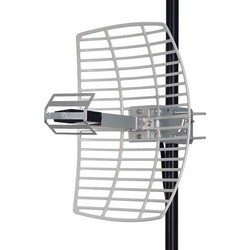In today's digital age, Wi-Fi has become an essential part of our daily lives. From connecting our smartphones and laptops to streaming devices, Wi-Fi is the backbone that keeps us connected to the internet. One commonly used frequency is the 2.4 GHz Wi-Fi band. In this article, we will dive into the world of 2.4 GHz Wi-Fi and explore its features, advantages, and limitations.
What is 2.4 GHz Wi-Fi?
2.4 GHz Wi-Fi refers to the frequency band used by Wi-Fi antennas, routers and other devices to transmit and receive wireless signals. It operates on the 2.4 gigahertz frequency, hence the name. This frequency range is widely adopted and supported by most Wi-Fi-enabled devices worldwide.
Advantages of 2.4 GHz Wi-Fi
- Range: One of the key advantages of 2.4 GHz Wi-Fi is its ability to provide a wider coverage area compared to higher frequency bands. The lower frequency allows the signal to penetrate through walls and obstacles more effectively, ensuring a stable connection even at a greater distance from the router.
- Compatibility: The 2.4 GHz band is compatible with older Wi-Fi devices, ensuring that you can connect virtually any Wi-Fi-enabled device to your network. This makes it ideal for homes or offices with a mix of older and newer devices.
- Interference: While it may seem counterintuitive, the 2.4 GHz band handles interference from other devices better than higher frequency bands. This is because many household devices such as cordless phones, microwaves, and baby monitors operate on the 2.4 GHz frequency, which can cause interference. However, modern routers are designed to handle such interference and provide a stable connection.
Limitations of 2.4 GHz Wi-Fi
- Speed: The 2.4 GHz band has a lower maximum data transfer rate compared to higher frequency bands, such as the 5 GHz band. This means that if you require faster internet speeds for activities like online gaming or 4K video streaming, you may experience limitations on the 2.4 GHz band.
- Congestion: Due to its widespread use and compatibility, the 2.4 GHz band is often crowded in densely populated areas or in places with multiple Wi-Fi networks. This congestion can lead to slower connection speeds and potential interference issues. However, modern routers employ techniques such as channel bonding to mitigate these problems.
Tips for Optimizing 2.4 GHz Wi-Fi
- Choose the optimal channel: Wi-Fi routers broadcast signals on different channels within the 2.4 GHz band. Use a Wi-Fi analyzer tool to determine the least congested channel in your area and configure your router accordingly.
- Position your router strategically: Place your router in a central location in your home or office to ensure the best coverage. Try to avoid obstructions such as walls or large furniture that can weaken the signal.
- Upgrade your router: If you frequently experience slow speeds or connectivity issues, consider upgrading to a more modern router that supports advanced technologies such as beamforming or dual-band operation.
In conclusion, 2.4 GHz Wi-Fi offers a reliable and compatible solution for connecting your devices to the internet. While it may have limitations in terms of speed and congestion, understanding its advantages and implementing optimization techniques can help you make the most of your Wi-Fi network. So, the next time you connect to Wi-Fi, remember the fundamentals of 2.4 GHz, and enjoy uninterrupted connectivity.


